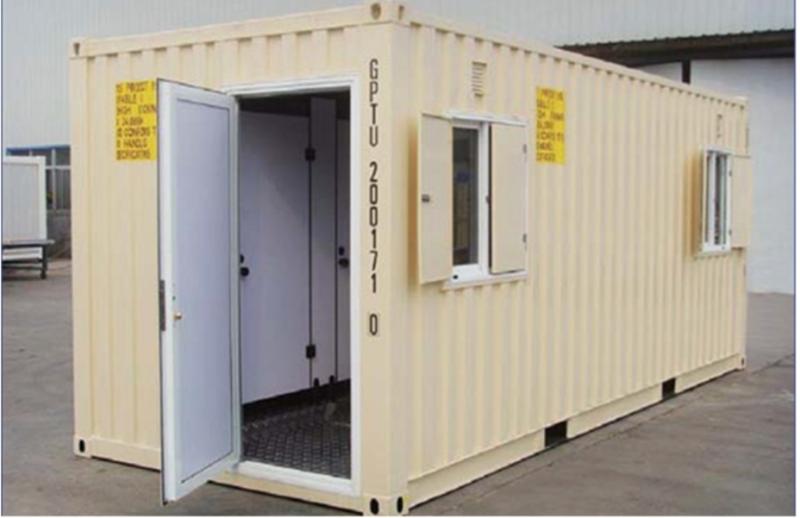Sanitary Containers: A Complete Guide to Portable, Efficient Lavatory Solutions

Sanitary containers, also known as lavatory or bathroom containers, offer a versatile and practical solution for portable sanitation needs. These self-contained units are designed to integrate insulation, an electrical system, plumbing, and sanitary ware into a single container. Once transported to a site, sanitary containers can be quickly connected to foundational plumbing, electricity, and sewage systems, making them an ideal choice for a wide range of applications—from public events to remote job sites and beyond.
What is a Sanitary Container?
A sanitary container is essentially a portable bathroom unit built into a standardized container shell. These containers typically feature:
Insulated walls to ensure comfort in various weather conditions.
Electrical systems to power lighting, ventilation, and other essential features.
Plumbing systems for water supply and waste management.
Sanitary ware, such as toilets, sinks, and showers, to provide essential hygiene amenities.
Each container is pre-assembled and ready for immediate use after minimal setup, simplifying deployment and enhancing accessibility in locations where permanent restrooms may be challenging to install.
Key Components of a Sanitary Container
Sanitary containers are thoughtfully designed with several core components to ensure optimal functionality and comfort. These include:
Toilet Units: Most sanitary containers come with one or multiple individual toilet cubicles, allowing for privacy and high capacity usage.
Hand Washing Stations: Essential hand washing areas equipped with sinks and soap dispensers to promote hygiene.
Doors and Windows: Strategically placed doors and windows in the container’s walls allow for ventilation, natural light, and easy access.
Waste and Water Tanks: Many models include self-contained water and waste tanks, eliminating the need for direct sewer connections.
Pump and Filtration Systems: These systems help maintain water cleanliness, ensuring safety and preventing contamination.
Advantages of Using Sanitary Containers
Mobility and Convenience
Sanitary containers are highly mobile and can be transported to almost any location. Whether for a temporary event, construction site, or remote area, these containers provide immediate and reliable sanitation solutions.
Self-Contained System
Equipped with self-sustaining water and waste tanks, sanitary containers do not require external plumbing connections. This makes them ideal for off-grid locations where infrastructure may be limited.
Customizable Options
Many sanitary containers are customizable to meet specific needs. Whether additional showers, extra sinks, or specialized sanitation equipment are needed, customization options can enhance user experience and functionality.
Durability and Hygiene
Built from robust, insulated materials, sanitary containers are resistant to various environmental conditions, ensuring long-term durability. Additionally, they are designed for easy cleaning and maintenance, promoting a sanitary environment.
Applications of Sanitary Containers
Sanitary containers have widespread applications across various sectors, including:
Public Events: Festivals, concerts, sports events, and other gatherings require accessible, clean restroom facilities that can be set up and removed quickly.
Construction Sites: Remote or temporary job sites benefit from sanitary containers, providing workers with necessary restroom facilities without the need for permanent plumbing.
Emergency and Disaster Relief: In areas affected by natural disasters, sanitary containers provide immediate, safe, and sanitary restrooms.
Public Spaces: Schools, hospitals, parks, and other institutions can use these containers to expand restroom capacity or provide temporary solutions during renovations.
Features of Advanced Sanitary Containers
Modern sanitary containers come equipped with features that enhance their usability and hygiene standards. Key features include:
Energy-efficient lighting and ventilation to reduce electricity consumption and improve comfort.
Advanced pump and filtration systems to ensure water safety, particularly important for containers used in remote or under-resourced areas.
Heavy-duty materials that are corrosion-resistant and easy to maintain, ensuring the unit remains in top condition for prolonged use.
Enhanced insulation to maintain a comfortable temperature within the container, making it suitable for extreme weather conditions.
Frequently Asked Questions (FAQs)
Q1: How are sanitary containers powered?
A: Sanitary containers come equipped with electrical systems that can be connected to an external power source. Some models may also offer solar power options for off-grid locations.
Q2: What maintenance is required for a sanitary container?
A: Regular cleaning and waste removal are essential for maintaining hygiene. Additionally, routine inspections of plumbing, electrical systems, and filtration are recommended to ensure optimal performance.
Q3: Can a sanitary container be connected to a sewer line?
A: Yes, while most sanitary container factory come with a self-contained waste tank, they can also be connected to a sewer line if available on-site, allowing for continuous operation without frequent waste removal.
Q4: Are sanitary containers eco-friendly?
A: Many sanitary containers are designed with eco-friendly features, such as low-flow water fixtures, energy-efficient lighting, and sustainable materials, contributing to reduced environmental impact.
Q5: Can the interior layout be customized?
A: Yes, sanitary containers offer flexible interior configurations, allowing customers to choose the number of toilets, showers, and sinks to suit specific requirements.
Conclusion
Sanitary containers offer an efficient, portable, and versatile solution for a wide range of sanitation needs. Their self-contained, durable design and easy setup make them invaluable in settings where traditional restrooms are impractical. By investing in sanitary containers, organizations and event planners can provide clean, safe, and accessible hygiene facilities wherever they are needed.








Comments